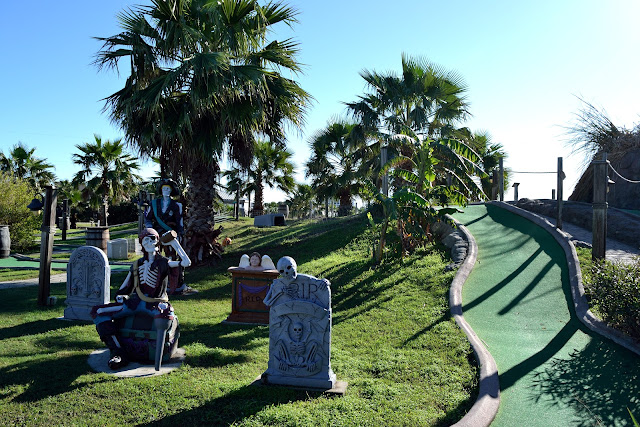The first permanent settlement on the island was on the southern tip by a Spanish priest, Padre Jose Nicolas Balli in 1804.
Prior to the Spanish, the only people known to inhabit the island were nomadic hunter-gatherer native Americans.
From 1804 to 1972 as Texas grew in population, the island once known for isolated wilderness changed to ranch land. Water on all sides made this land ideal for open grazing.
Texas wouldn't be Texas without the exploitation of gas and oil. Padre Island National Seashore is one of 13 national parks in which the NPS regulates nonfederal gas and oil development. The first well was drilled in 1951 and produced a dry well. Since 2005 there has been 78 oil and gas operations on the island. As I travelled down the road I saw zero evidence of their locations.
As always I started my exploration of the park at the visitors center. There was no short film but some interesting displays and a volunteer more than willing to share his knowledge on events and what to see and do.
I had to check out the campground because you never know when one wants to camp with no hook-ups. Like that will never happen if Susan has a say. There are 48 sites in total, 42 for RV's, 6 for compact vehicles, and 25 for tents. A fresh water filling station and a dump station is located just outside the campground.
Being 100 yards from the beach there were a number of RV's on site. The campground does have hot showers and flush toilet facilities.
A nice boardwalk leads you to the beach where I found several people fishing, birding, and just plain old walking the shoreline.
As I continued down the paved road I rounded the corner and came to an abrupt stop. In front of me was one of the most beautiful beaches. Yes, you can travel on the beach in a vehicle. However, beaches in Texas are considered public highways meaning all vehicle have to be street legal and the person driving the vehicle has to be licensed.
This beach can be very remote. The first 5 miles is normally suitable for 2 wheel drive vehicles. South of milepost 5, a four wheel drive vehicle is required. Getting stuck with an incoming tide is not on mine nor Precious bucket list. I did not venture any further than that.
Imagine camping in this solitude. Nothing around for miles. You can camp on the beach or the edge of the dunes for free.
According to the park services, most of the garbage on the beach washes in from the Gulf of Mexico and not from park visitors. Somehow I found this difficult to believe. Vacated campsites where riddled with garbage. People cannot help but leave a carbon footprint.
There are 380 species of birds documented on Padre Island at different times of the year. Before leaving this beach paradise I stopped to shoot some birds that were just hanging out. A Long-billed Curlew and a Royal Tern were both keeping an eye that I didn't get too close.
Just as I was packing up to leave, a vehicle flew by me scaring all the birds and me. I called him/her a few choice words than realized who it was.
Border patrol. Yep that would be them. I forgot how close we are to the border.
As I was leaving the park I saw an old building that needed to be checked out. A sign indicated that you couldn't enter, so I didn't. There are plenty of rattlesnakes in this area. The Novillo Line Camp is the last historic place within the National Seashore that reflects human use and occupation on Padre Island. This camp was the northernmost line camp used by the Dunn Cattle Ranch in the late 19th and early 20th century.
There's talk about restoring it for historic purposes but that has not happened yet. For now it sits as a reminder of years past.

































































